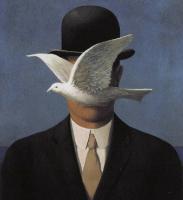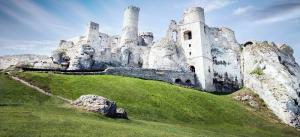7 customs and traditions of Mexico that you will like to know
The customs and traditions of Mexico are full of color, celebration and joy, but also of mysticism, tradition and history. Each of them is interesting and attractive both for the inhabitants themselves and for visitors.
A journey through the meaning, culture and manifestations of Mexican traditions is always an invitation to witness and experience them up close. In each festival there are customs that reflect the historical richness resulting from the combination of two ancestral cultures.
- Related article: "10 short Mexican legends based on popular folklore"
The 7 most representative traditions and customs of Mexico
Learn about the traditions and customs of Mexico with more history, more curious or surprising.
1. Day of the Dead
It takes place on November 1 and 2 and is celebrated throughout the country with some variations depending on the region but with aspects that are preserved everywhere. Custom dictates to put an offering in each home with photos of deceased relatives and loved ones.
The offering has very particular elements, such as cempazuchitl flower, colored confetti, incense and the food and objects that those who are remembering liked when they lived.
Skulls made of sugar are also placed with the names of the people who are still alive..Another deeply rooted tradition is to spend the whole night in the pantheon at the grave of those you love, and decorate it with flowers and food, at the same time that you can listen to music, because the atmosphere is more than ceremonious, festive. Without a doubt, this celebration is one of the most typical and recognized among the customs and traditions of Mexico.
- You may be interested: "This is what the 4 main Mesoamerican cultures were like"
2. Kings Day.
It is celebrated on January 6. The custom is to eat a bagel with caramelized fruits on top and hidden inside it carries a small plastic or ceramic doll.
The thread is shared among several so that each one breaks the portion of it and discovers whether or not she has taken a doll. Whoever discovers the donut doll among their bread must invite the rest of those who shared the donut to tamales on Candlemas Day.
Of the customs and traditions in Mexico, this is one of the children's favorites, because that same day at night, the wise men left toys in the houses to the children who They should have written a letter and put it in a shoe, for the Magi to pick it up and put the toys there.
3. Candlemas day
On February 2 the Virgen de la Candelaria is celebrated. The custom is to prepare atole and tamales, two of the most typical dishes in Mexico.. These are invited by the people who on Three Kings Day have found the doll inside the rosca de reyes.
In addition, another custom is to dress the child that is worn at birth at Christmas with baby clothes or representative of the family's tastes, another very typical custom in Mexico. This tradition is not one of the best known worldwide, but it is one of the most important in the country.
4. Independence Day Anniversary
The night of September 15, the president in turn goes to the National Palace to perform the so-called "Grito de Dolores" which is how the call made by the priest Don Miguel Hidalgo to start the rebellion for the fight for the independence of Mexico is known.
The festivity full of color, typical food, mezcal and mariachi music all the squares of the Mexican Republic. On September 16 there is a military parade and a roll call of the armed forces.
5. Guelaguetza
It's a great party that brings together dancers from the 8 regions of the State of Oaxaca who perform folk dances for a week accompanied by wind music. It is a festivity that has prevailed over time, full of color and one of those with the greatest ancestral tradition in Mexico.
It takes place in the Cerro del Fortín that is located in the surroundings of the city of Oaxaca.
6. Papantla Flyers
This Mexican tradition does not have a specific date, It is a ritual that takes place mainly in Papantla Veracruz. It consists of a series of dances and movements prior to climbing a 30-meter-high trunk.
Once up, tied a rope that in turn is tied to a cross at the top of the post, they go down while they go around and the so-called caporal plays the flute at the top of the post. All this is done dressed in their typical costumes, and although it is originally from Veracruz, it is possible to witness this ritual in tourist places for the enjoyment of visitors.
7. Mariachis
Mariachi is a musical genre, but the group that performs it is also known that way. Dressed in a typical charro costume including their hat, each member is assigned an instrument.
The mariachis They are requested in almost any Mexican party with typical music to dance or sing. On the other hand, they are a representative icon of the customs and traditions of Mexico as they are present in the Pantheons on Day of the Dead, in Independence Day celebrations, at Masses on the Day of the Candelaria.
Bibliographic references:
- Gómez Pérez, M. TO.; Delgado Solís, J. TO. (2000). Rites and myths of death in Mexico and other cultures. Tomo Editorial Group.


